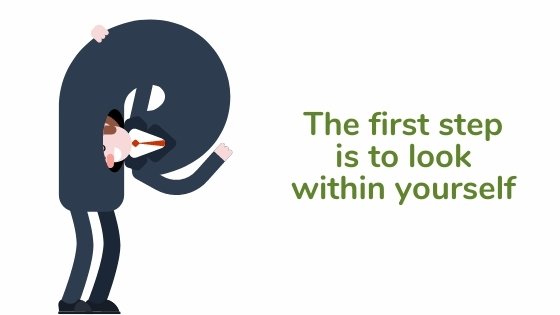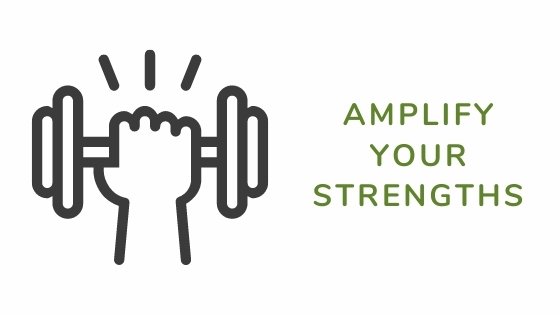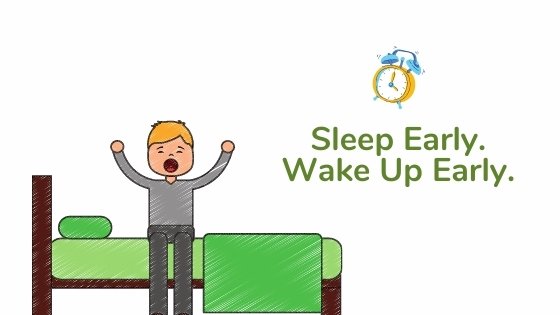Quick Summary: Think Like A Monk by Jay Shetty shares the author’s experience and learnings when he was trying to become a monk in the ashram. This book is a perfect tool for thinking like a monk and seeing life with purpose and clarity.
Who should read this book?
- Anyone interested in living a simple or minimalistic life.
- People who have wrong notions about monks’ life.
- Anyone who is struggling to manage his thoughts and emotions.
- Adults who feel a sense of lacking in their lives.
- A teenager who wants to find the purpose of his life.
Think Like A Monk Summary (PDF)
In this summary, I will share all the key lessons I learned from this book.
Ready to start thinking like a monk?
Alright, let’s jump right in!
Why Think Like A Monk?

Don’t you think it’s important to ask yourself, “Why should I think like a monk in the first place?”
What’s the need to adopt the thinking of a monk?
Isn’t your thinking already good enough?
If you are an average person, becoming a monk would be the last thing you would want to do, right?
So, why is it that the author asks you to think like a monk?
Let’s answer these questions first.
To answer these questions, you must first understand what motivates people to become monks.
As you already know, life is filled with noise and distraction.
Monks are those people who can stay calm and shut off the unwanted noise around them. They can think clearly and focus on their thoughts.
They can sit for hours wandering in their own space of mind and be tranquil.
Don’t you want to do that?
Don’t you want a peaceful mind?
Don’t you want to be happy and stay calm despite all the chaos in the world?
We all want it, right?
“But…
Argh, I don’t want to shave my head, become a baldy, and wear those plain robes.”
I get it.
Luckily, the author says you don’t have to follow those crazy monk practices. You don’t have to become a monk.
You just have to adopt the mindset of a monk.
Best Tools for Bibliophiles
- Listen to your Favorite Books on The Go: Try Audible and Get Up To 2 Free Audiobooks | Get 3 Free Audiobooks
- Read over 2 million e-books on any device: Sign up for 30 days free trial of Kindle Unlimited and read your favorite titles.
- Get free 2-day shipping of your favorite books and stream premium TV shows on Amazon Prime: Sign up for 30 days free trial of Amazon Prime.
- I use Notion to take reading notes, plan everything, and run all my businesses. (Notion is my Second Brain 🤯): Get Notion for free for personal use (paid for teams/businesses)
Becoming A Monk Is Not A Waste Of Time (As Most People May Think)
You might think, “If becoming a monk is that awesome, why aren’t many people doing it?”
Well, becoming a monk comes with sacrifices.
For example, when the author stayed in the ashram, he couldn’t play games and watch movies on his mobile.
Sounds like a tricky thing to do, doesn’t it?
Monks aren’t allowed to give in to distractions. They are shut off from the external world to a greater degree.
It’s not easy to become a monk.
Also, most people (especially parents) think that becoming a monk is a waste of time.
They think that their kids should study hard and do an admirable job.
Well, there is nothing wrong with that.
But they don’t realize how thinking like a monk can help their kids grow in the real world.
Monk-thinking isn’t theoretical. It’s very practical.
People think of monks as otherworldly creatures because they don’t understand monks.
Even the author faced some challenges when he decided to become a monk. His parents, too, thought that he’d waste his life in an ashram.
But despite what other people said, he stuck to his decision.
We are so fortunate. If the author had given up on becoming a monk, this book wouldn’t exist.
And definitely, you wouldn’t be reading this summary.
I think that people should be encouraged to think like a monk.
Because when you think like a monk, you look within.
When you meditate, you reflect on your thoughts.
Ultimately, you achieve clarity in your thoughts, which many people struggle for, yet fail.
But no matter what I say or Jay Shetty (the author) says, most people will still think of monks as aliens.
Why? Because to feel or think like a monk, you need some level of self-awareness.
There is a reason why many people struggle to meditate.
When people fail to meditate, they get frustrated and just give up.
I think that adopting the mindset of a monk brings us closer to our natural selves.
Anybody can become a monk. Yes, even without following all those practices.
You simply need to adopt that mindset.
Finally, it’s up to you. There isn’t any harm in becoming a monk, though.
But I think that it’d be too extreme for an average person. So most people will choose to adopt that mindset.
Even I don’t want to become a monk. I’m after the approach they use to focus and keep calm.
Playing Different Roles And Forgetting Our True-Self In The Process
In the first chapter of this book, I realized that our identity changes at every moment…little by little.
Let me explain.
The outer world influences our identity.
We play so many roles every day.
And the exciting thing is:
We don’t even realize when that happens.
For example, when you are reading this book summary, you are playing the role of a reader.
Did you realize it? Probably not. Because you were in the flow.
Another example, when I’m writing this summary, I’m a writer.
During our day, we keep playing multiple roles despite being one person.
“Okay, so what’s the point?” you may ask.
The thing is:
When we play so many roles, we forget our true selves.
That’s why you must think like a monk.
When a monk meditates, he watches his thoughts as they come and go.
When you do that, you stay close to your true self.
And when I say true-self, it means that:
You are not your mind.
You are not your thoughts.
You are not your body.
You are not what other people think you are.
You are you–your true self. Period.
(Please note that true-self is a highly subjective term. Even I don’t fully understand it. I only know what my true self isn’t. There are countless opinions out there about it, though.)
Thinking like a monk isn’t about ditching the reality. It’s about accepting reality.
So, although you’ll be thinking like a monk, you won’t stop playing the roles you are supposed to play in the real world.
The First Step To Becoming A Monk Is To “Look Within.”
Notice the word “look within.”
If I were to sum up the whole philosophy of this book, it’d be this: Look Within.

But what do you look for within yourself when everything you desire is outside? That’s something anyone would ask, I guess.
When you look within, you just sit and observe what’s happening.
Yes, although it sounds so simple, it isn’t.
Only very few people reach this stage of self-awareness.
Most people give up too early.
But how could this simple task be so complicated?
The author answers this question in the first chapter, “Values.”
We are trained to do things that other people want us to do from the beginning of our lives.
Other people, including our parents, teach us how to think and act.
So, when we grow up, we are trained to chase after worldly things.
And because only a few people try to look within and reflect on their thoughts, almost nobody tells us to “look within.”
Our values, thoughts, and self-image, …pretty much everything, are clouded by others.
Now what monks do is they find a space or solitude for themselves.
They live a life detached from the materialistic world.
They try to clear their dusty self, which has become clouded by other people’s thoughts and opinions.
And how do they accomplish that?
By looking within themselves. By meditating. By silently observing their thoughts. By detaching themselves from the outer world.
By letting go of their desires…
By doing almost everything that allows them to become more self-aware.
Let’s continue this discussion in the next lesson.
Fighting The Monkey-Mind
When put another way, becoming a monk is a transition from having a monkey-mind to a monk-mind.
Let’s talk about this monkey-mind a little.
Monkey-mind is restless. It’s aimless. It jumps from one thought to another.
On the flip side, the monk’s mind is peaceful, silent, and calm.
Most people possess a monkey mind.
Not because it’s their fault, but because they have been conditioned that way.
So, how do you fight this monkey mind? Well, you don’t.
First, you observe it.
Then identify the issue.
And then work on it.
It’s the same approach you use to get rid of negativity.
This Is How You Get Rid Of The Negativity

Negativity is one of those things which is in abundance.
You don’t even need to lift a finger. It’s plenty around you already.
All it needs is a little passage into your mind.
Just turn on the TV and put up a news channel. You’ll understand what I’m trying to say.
It’s harder to find positivity than negativity, as negativity sells better.
Getting back to the question:
How do you get rid of all that negativity?
Now that you realize that there is negativity in the world and some of it might be inside you, you are already on your way to getting rid of it.
Congrats!
The author gives a 3-step framework to get rid of negativity:
- Spot the negativity.
- Stop and understand it.
- Swap the negativity with some other feeling.
As I said just now, the moment you realize the presence of negative thoughts in your mind, you are past step one.
Now, the next step is to stop and just watch your thoughts.
Put simply: you can sit and meditate for a while.
You have to observe what thoughts are popping inside your mind.
Where are they coming from?
Because if you could find the source of those negative thoughts, you could eliminate the source and get rid of them.
But most of the time, there are various sources, and it’s hard to get rid of all of them.
For example:
There may be a person causing those negative thoughts. And, of course, you couldn’t permanently eliminate him.
That would be impossible if that person is your family member, right?
Anyway, you’ll need to identify the nature and source of those thoughts.
The last step is to replace those thoughts with better ones.
“What about eliminating them?” you may ask.
In most cases, thoughts are hard to eliminate.
For instance, if I ask you not to think about something, you’ll instantly start thinking about that.
That’s how our minds work.
No need to get frustrated for it!
The author suggests that you try to replace those negative thoughts with feelings like “empathy” or “compassion.”
It’s far easier to replace them than to get rid of them. (Just like habits)
Let me explain better with an example.
Let’s say your friend is getting better grades than you.
And you’re feeling envy or getting jealous about it.
Is it good? Absolutely not.
Your friend getting better grades than you has nothing to do with your grades.
Even if your friend gets worse grades than you, you won’t be getting any better.
So all that negativity boiling inside your minds prevents you from doing your best.
Now, what’s the first thing you’ll have to do? Yes, first, you’ll have to become aware of the fact that negativity is there.
After that, you’ll have to understand and realize that those thoughts are doing you more harm than good.
And at last, you’ll try to build empathy towards your friend.
Bingo!
I agree. It won’t always be that easy. It’s easy because I made it so.
But in the real world, things aren’t that easy all the time.
The hardest part will always be to dig inside your mind and assess your thoughts, feelings, and emotions.
If You Laugh At Others’ Failures, Then You’re Not Moving Forward Either.
Brutal truth!
The example that I presented to you in the last lesson made me realize this fact:
You can’t build your success on others’ failures.
The other person’s success or failure doesn’t have anything to do with you.
But why is it that when somebody else fails, you feel like you’ve won?
That’s because our minds love easy wins.
To win is hard. But to see someone else lose and make fun of is incredibly easy.
It fuels our ego and gives us a sense of growth.
But in reality, you become worse if you laugh at another person’s failure.
And if that’s the case, you need to do some self-reflection because something is definitely wrong there.
Forgive Unconditionally And Reap The Rewards
A part of monk philosophy is to let go of any grudges against anyone.
The idea is to forgive even your enemies.
Sound crazy?
Allow me to explain.
We all pass through those situations when someone deeply wounds our heart and rob us of our happiness.
Then what happens?
We swear not to forgive that person. Ever.
The author talks about true freedom in life.
He says true freedom isn’t about doing whatever we want to do. It’s about getting rid of those things we don’t want in our life by choice.
Holding a grudge builds negativity and unnecessary pressure inside our minds.
It’s hard to forgive someone. Pretty understandable!
But here is the thing:
The true beauty lies in unconditionally forgiving someone.
That’s how you become mentally free.
When you let go of those thoughts, you become tranquil.
Of course, you can forgive someone on conditions, like asking the other to admit his mistake.
But when you forgive unconditionally, you achieve true freedom both inside your heart and mind.
It’s counterintuitive. Your mind will tell you not to forgive someone who hurt you.
It’ll say, “f*ck that bas#ard.”
But remember, you are not your mind.
You are not the slave of your mind. You are its master.
When you give total control to your emotions or thoughts, you work under a terrible master.
This is the reason why you should be self-aware.
Because on the surface level, you’ll hardly realize the entire scenario.
The monks focus on what’s most important.
For example, they focus on their breath.
They let go of unnecessary materialistic clutter –both on their body and inside their mind.
Amplify Your Strengths, But Also, Don’t Forget Your Weaknesses.

Most people give far too much attention to their mistakes.
It’s good to work on your weaknesses.
But not to the extreme.
Why? Because it’s way better to amplify your strengths than to keep working on your weaknesses.
Allow me to explain.
Let’s say you are good at Art but weak in Mathematics.
Now, which one would you focus more on?
Most people would fuss over why they can’t solve those mathematical equations.
And as a result, they will undervalue their ability to solve mathematical problems.
Imagine if Lionel Messi had focused more on his short height and how he could never become a great football player as the tall players get an advantage.
Fortunately, he didn’t.
Messi amplified his strength, that was playing football.
Not that he didn’t practice, he worked more on the things he was naturally good at.
If I were to put this concept in even simpler words, I’d say that you ask yourself:
What’s that one thing you can give to the world?
Yes, you only need one thing to write history, in an ideal case.
You can’t become good at everything due to a lack of time and energy.
So focus on your best strengths.
Does this mean that you should ignore your weaknesses? No.
The point is:
You have to give more priority to your strengths when compared to your weaknesses.
You may even follow Pareto’s 80-20 rule if you wish.
Spend 80% of your time amplifying your strengths.
And spend 20% of your time working on your weaknesses.
So, whenever you find yourself complaining about your weaknesses, remind yourself why Lionel Messi is a legend in football and why Michael Jordan is a basketball legend.
Always remember:
Amplify your strengths.
(But at the same time, don’t use this advice as an excuse for your weaknesses.)
Find Your Dharma
No, you don’t have to.
You don’t need to go through those religious textbooks to find your Dharma.
Put simply: Dharma is pretty much the same as Ikigai.
If you know your strengths and weaknesses, your job is half-done.
I’m not going to explain it in the same way the author did.
It’s simple, if you’ve read the book Ikigai, you already know what your Dharma is.
The author has borrowed this concept of Dharma from the book Ikigai. (Just my opinion)
Although, there are minor differences between both of them.
But I found them similar.
Anyway, I’ve already written about it.
Suggested Read: Ikigai Summary
Go To Sleep Earlier Today To Wake Up Early Tomorrow

Do you struggle to wake up early in the morning?
How often have you heard the stories of successful people who say they wake up at 4 am?
You look at yourself in the mirror and wonder, “why can’t I do that?”
Although this advice may sound ridiculous to some people who can easily wake up at 4 am.
Many people still struggle to do it.
I also struggle to wake up before 7 am. (Shh.. don’t tell anyone)
Even the author did struggle during his days in the ashram.
Note: If you don’t have that issue, feel free to skip this lesson.
But if you have, keep reading.
The key is to get to sleep earlier.
The earlier you get to bed, the earlier you rise in the morning.
Getting to bed early sounds a little unproductive.
But the fact is:
It works.
You don’t need scientific research to prove that.
Just try it.
The Key Takeaways From “Think Like A Monk By Jay Shetty”
Here are the key points or takeaways from this extensive summary:
- Build self-awareness and observe what’s going on inside your mind.
- Let go of all those things that create clutter in your mind.
- Try to forgive people unconditionally and be free.
- Try to figure out your dharma.
- Amplify your strengths. But also don’t use your weaknesses as an excuse.
- Don’t try to build your success over others’ failures.
Read related book summaries:
- Ikigai by Hector Garcia and Francesc Miralles
- How Will You Measure Your Life? by Clayton M. Christensen
- Don’t Sweat The Small Stuff by Richard Carlson
- Man’s Search for Meaning by Viktor Frankl
Want to learn more insights from books about mindfulness?
Try Blinkist and…
Get access to insights from more than 4500 non-fiction titles on more than 25 categories like meditation, mindfulness, happiness, etc.
Simply start Blinkist’s 7-day risk-free trial. You won’t be charged if you cancel before the trial ends.
I highly recommend this application to busy people who love to read book summaries on personal development.
Click here to claim your Blinkist 7-Day Risk-Free Trial
Think Like A Monk Quotes
Here are a few quotes that I liked in this book:
“Your time is limited, so don’t waste it living someone else’s life.”
~Steve Jobs
“Fear doesn’t prevent death. It prevents life.”
~Buddha
“If you think you are too small to make a difference, try sleeping with a mosquito.”
~Dalai Lama
“The key to real freedom is self-awareness.”
~Jay Shetty
Want to learn & master key strategies to improve your Self-Awareness?
If you are serious about improving your self-awareness and thus becoming more mindful in your life, I highly recommend that you enroll in this course by Joel Perez:
⇾Strategies to Improve Self-Awareness
Who is Joel Perez? He is an executive coach, author, and speaker.
To enroll in this course, you simply need to sign up on LinkedIn Learning.
You’ll get 1-month FREE full access to 16000+ such professional courses if you go through the link here.
Sound cool? It absolutely is.
If you continue after a free month, you’ll support this website and the mission to bring the right education to all.
Click here to claim your 1-Month LinkedIn Premium Free Trial
Think Like A Monk Review
At first, I thought this book would be like all other books, which have repurposed and generic self-help advice.
But it has actionable insights.
The author has shared all learning from the time when he was in the ashram, trying to become a monk.
Plus, the way the author puts his ideas, you won’t realize when the time will fly.
The language used by the author is suitable even for someone who doesn’t read such books.
Considering the theoretical nature of spirituality, this book turned out to be pretty helpful to me.
I’ve learned many lessons that I can apply from the very next day.
I also loved how the author concluded this book. He has clarified that you won’t change just by reading this book alone.
Things might not work out your way.
Simply, he advises you to expect unfavorable circumstances and set realistic expectations.
I’d say that this book is a tool to clear your mind from clutter, which has been fed to you for years.
I highly recommend this book.
I’d give it the rating of 9.2/10
Why such a high rating?
That’s because it has almost every element that makes a book worth reading.
From humor to highly actionable insights, this book has what it takes to guide anyone towards a better life.
Some people may not like the fact that the author has taken references from The Bhagavad Gita. But I didn’t find it biased. So, that isn’t a problem.
You should give this book a read.
Now It’s Your Turn
I guess that after reading Think Like A Monk Summary, you’re almost feeling like a monk now.
What was your ‘aha moment’ in this summary?
Or do you plan to become a monk ever in your life?
Please let me know what you think in the comments below.
I’d be waiting for your response and will try my best to reply to everyone.
And, as always, don’t forget to share with someone who seriously needs some monk lessons.
Want to consume more insightful, power-packed content like this in the future?
Subscribe to the weekly email newsletter.
Subscribe to YouTube channel for animated video books.
Try Amazon’s Audible 30-days Free Trial and Get 2 Audiobooks for free.

